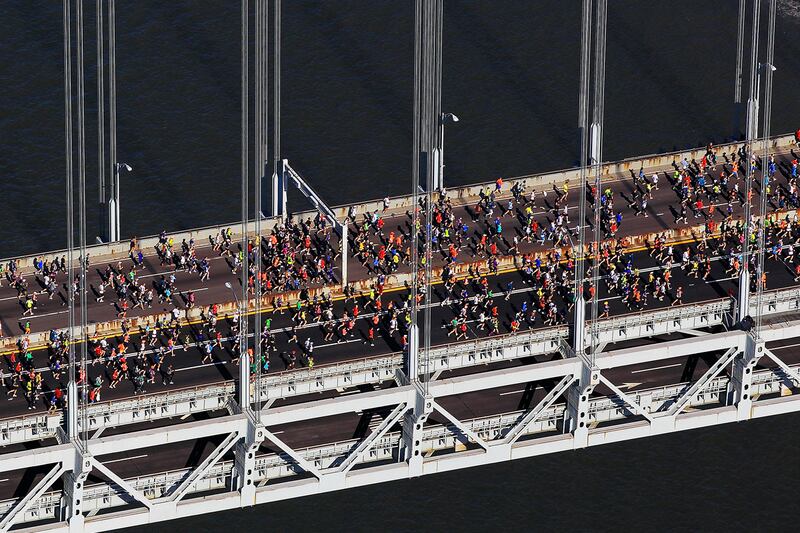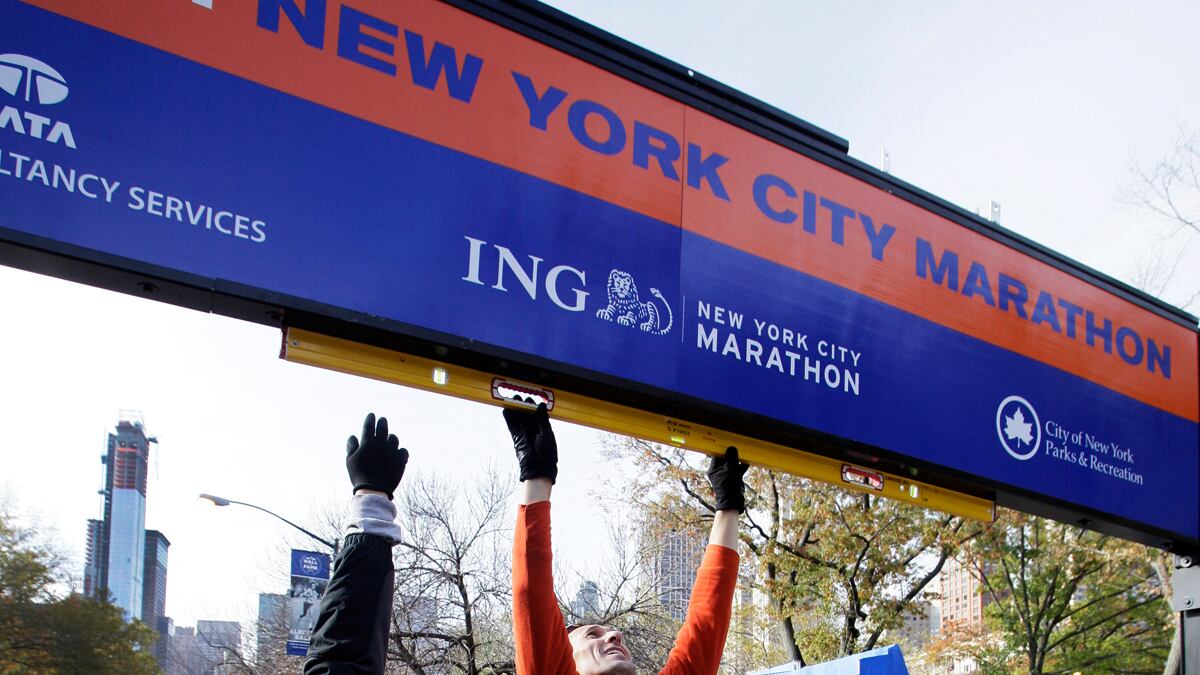New York City without the marathon would be like New Year’s Eve without Times Square or July 4th without fireworks. So to argue that Sunday’s race should be canceled or suspended this year in the wake of Hurricane Sandy may seem spiteful. And yet the marathon backlash is not surprising. The logistics of staging the event just six days after Sandy hit make it a tough sell.

Running in the New York City Marathon is one of the most life-affirming things you can do. You set off on the Verrazano-Narrows Bridge as fireboats spray water and Sinatra’s “New York, New York” blares over loudspeakers. After the long, endless haul up through a packed Fourth Avenue in Brooklyn, the crowd thins out to a few curious Chasids in Williamsburg. After slogging through an industrial patch of Queens, runners accelerate over the long rise of the 59th Street Bridge, eager to reach Manhattan and First Avenue’s wall of sound. A few miles north, a brief, cold turn into the Bronx, a trot down Fifth Avenue, and you start running downhill into Central Park. When I ran New York in 2006 (3:25, thanks for asking!), I never felt more alive.
Plenty of other cities stage marathons. But none quite like this one. The New York City Marathon is fueled by thousands of professionals, volunteers, medical staff, and emergency crews. New York Road Runners CEO Mary Wittenberg presides over an operation that Wal-Mart would envy: goods, people, services, and stuff flow through a crowded city with great ease.
And of course, after disruptive episodes, events like the marathon can provide a much-needed return to normalcy. Thousands of people around the world have spent a lot of time and money to train and travel for the race. Many are running for reasons that have nothing to do with personal bests and everything to do with survival—celebrating a triumph over cancer, or running in memory of loved one, or raising money for charity. For the bars and restaurants that line the route, the marathon means big business, adding up to $350 million of economic activity.
But the marathon involves a certain amount of conspicuous consumption of basics—fresh fruit, water, gasoline, and electricity—all of which are in short supply in New York and the surrounding region. Staten Island is a remarkably inauspicious place to start. In the hours before the race, thousands of people arrive in New York’s least populous borough and shed disposable clothes, jam themselves full to bursting with Gatorade and water, and then leave behind a huge mess. This year, it will all take place with people on Staten Island lacking water and electricity, with many residents suddenly homeless, and with volunteers and professionals retrieving drowned bodies.
It takes a lot of human power and energy to run those 26.2 miles. But it also requires a lot of power and energy to run the race: to fuel the cars and rescue vehicles, to power the sound systems and run the communications networks. In ordinary times, nobody would begrudge the use of fuel and mobile-generating capacity for the marathon. But these aren’t ordinary times. Hundreds of thousands of people within a stone’s throw of the race route lack power. The New York Post noted that the mobile generators used for the marathon could power 400 homes on Staten Island. Meanwhile, the U.S. military is airlifting generating equipment to the East Coast. The disparity between the spare-no-resource attitude of the marathon and the slow-motion restoration of electricity in the New York region is noticeable.

Then there are the logistics issues. The marathon is a 26-mile-long feeding, hydrating, first-aid, and security system. It relies on highly functioning communication systems. Chips laced into runners’ shoes broadcast times and locations when they run over pads in the street. And the police and medical systems need to be fully responsive to the many emergencies that arise. These systems are already heavily taxed in New York. With cellphone service spotty, many residents have been reduced to using pay phones. The police, fire, and emergency medical teams are exhausted and spread thin from days of responding to Sandy-related trauma.
The marathon can’t work without a fully functioning transit system. On no day in New York is the underground transportation system more vital. Several bridges are essentially closed for the day—the Verrazano-Narrows, the 59th Street Bridge, the Willis Avenue Bridge, and the Madison Avenue Bridge. In many areas of the city, it is impossible to get across certain streets above ground. And the street closures and huge concentrations of people in Manhattan have huge ripple effects. With the region’s train and subway systems not yet completely operational, getting around will be very difficult for everybody, from marathon runners and spectators to New Yorkers who have no interest in the race.

The marathon, is, well, a marathon event. While the winners cruise through in about 130 minutes, the crowds keep coming for hours and hours. And it requires a huge clean-up operation. Much of the work is done by volunteers. But imagine if all the energy spent cleaning up after the marathon were devoted instead to cleaning up Staten Island, or removing sand from streets along the Jersey Shore, or clearing out downed trees and branches in Westchester County. That would certainly hasten the return to normalcy.
At its root, the New York City Marathon is a celebration of New York’s infrastructure, and of a city that works. Every November, it proves how people, goods, and services can move around a complicated landscape in a seamless, highly effective way. But the marathon can only work if everything else in New York is working at a very high level. And its hard to see how that will be the case by Sunday.






